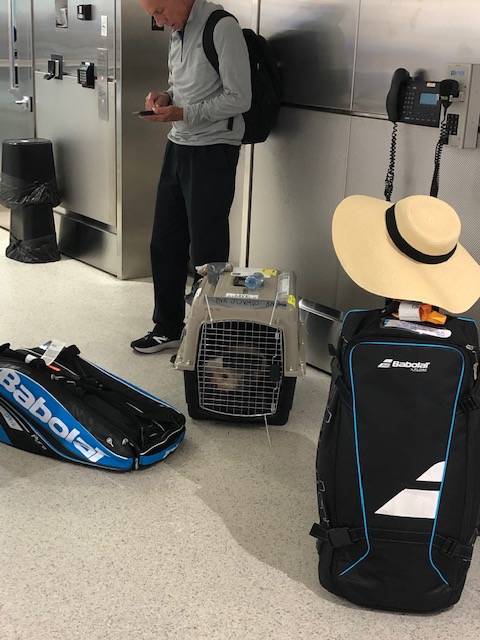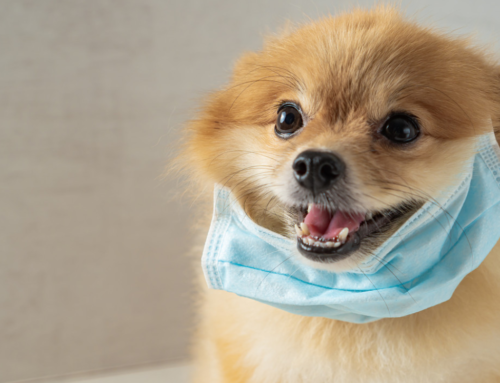The holiday season is fast approaching, which means pet travel is about to become more common than ever. In the rush to secure cheap tickets–or any tickets at all–many of us traveling for the winter holidays booked flights with layovers. While this may be only a slight inconvenience for a solo traveler, navigating layovers with a pet presents a range of logistical challenges for passengers.
Usually, finding a pet relief station is the biggest concern a pet parent will handle during a layover. If flights are delayed, your window of opportunity will shrink, leaving you with little time to let Fido take a break. In some cases, however, you may be concerned about your pet getting onto the connecting flight, especially if it is flying as checked baggage in the cargo hold. While every airport and airline handles this process differently, there are a few strategies you can deploy to prevent the worst from happening.
Layovers with a Pet in Cabin
Flying with your pet in the cabin significantly reduces the risk of harm and neglect during a layover. Your pet will not need to leave your side, which should provide some comfort in an otherwise stressful situation. When you arrive at your destination, you will have some time – typically, at least a few minutes – to locate the nearest indoor pet relief station and allow your pet to relieve themselves. If your flights are short, you may not even need to visit the pet bathroom (but if you have the time, we suggest letting Fido at least stretch his legs).
Layovers, however, can be very short. If you’re worried about relieving Fido while catching your connecting flight, here are some tips.
- Look up the layover airport map prior to travel and familiarize yourself with where the pet relief stations are. This will allow you to quickly locate the nearest pet bathroom.
- If the airport has only outdoor pet relief areas, ask the person at the check-in desk how long the line for security is. In most cases, this staff member has just needed to pass through the line themselves, so they should be able to provide updated information.
- Don’t book flights with fast layovers. While this might seem counterintuitive, it is more important to give your dog time to relax before a second flight than to rush frantically through the experience.
Layovers with a Pet as Checked Baggage
Navigating layovers with a pet traveling as checked baggage can be difficult – even dangerous. Last month, we received an email from a reader regarding a pet travel incident she witnessed. While in the international arrivals section of Miami International Airport, she noticed a dog carrier all alone beside the elevators. It was around 6:30 pm. She writes:
“Airport personnel walked past it for several minutes, and no one could tell me anything about the little white dog in the carrier except that it had been there for a while and that maybe her owner was detained in customers. I tried for an hour to get help for this dog, but no one really knew what to do. Apparently, her owner was transferring to another flight and didn’t know that he had to pick her up.”
This reader explained that the owner needed a wheelchair to get back to the dog, but that a sticker on the crate indicated that she hadn’t had food or a walk since 10:00 that morning. Luckily, the dog’s crate had the owner’s contact information, and when the reader was able to contact him, he was distraught. After several hours, the owner finally got a wheelchair to retrieve his dog. Without this reader’s help, a lot worse could have happened.
This incident indicates several failures on the part of both the airline and the airport, and we don’t expect this type of oversight to be the norm. That said, the holiday season is busy, and some things may slip through the cracks. As a pet parent, you must do what you can to prevent this scenario from happening. Here are our tips.
- When you check your pet in for a flight, talk to the airline associate about the process of transferring flights. Ask specifically about whether the dog will be walked, whether they will have food, and how they will get on the connecting flight.
- When you land at your layover destination, ask a flight attendant about the status of your pet. Do you need to go anywhere to retrieve them? Are they being transferred to the other plane? Can you see them for a couple of minutes? While actual transfer practices will vary by airline and airport, reminding the flight attendants can significantly reduce risk of harm or miscommunication.
- Write your contact information, destination, and home address on the crate. This will allow fellow passengers or airport personnel to contact you in the case of an emergency. Also, in large, bold letters, write “CONNECTING TO <FLIGHT NUMBER> FROM <AIRPORT> to <DESTINATION AIRPORT>, <DATE>” so that baggage handlers don’t forget.
- When you board your connecting flight, ask airport personnel, whether at the check-in desk or on the plane, if the dog has been loaded into cargo. This will provide another important reminder to staff that there is an animal that needs tending to.




